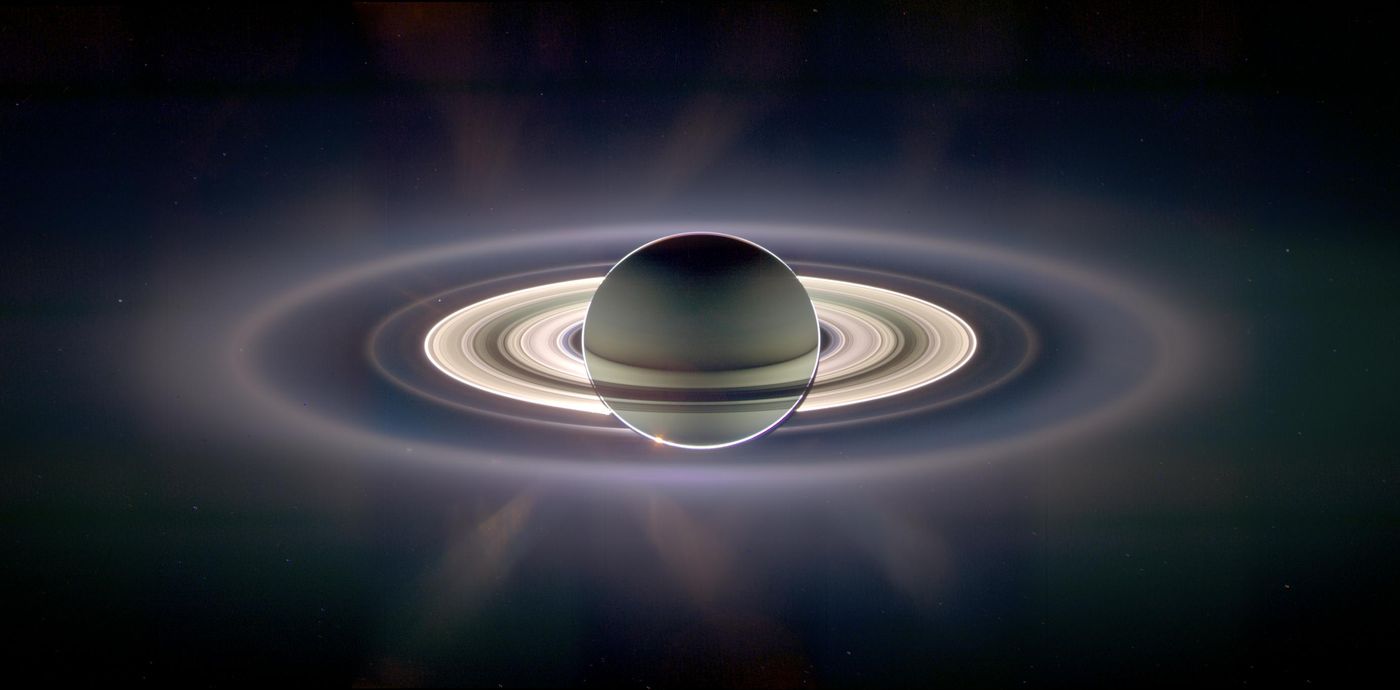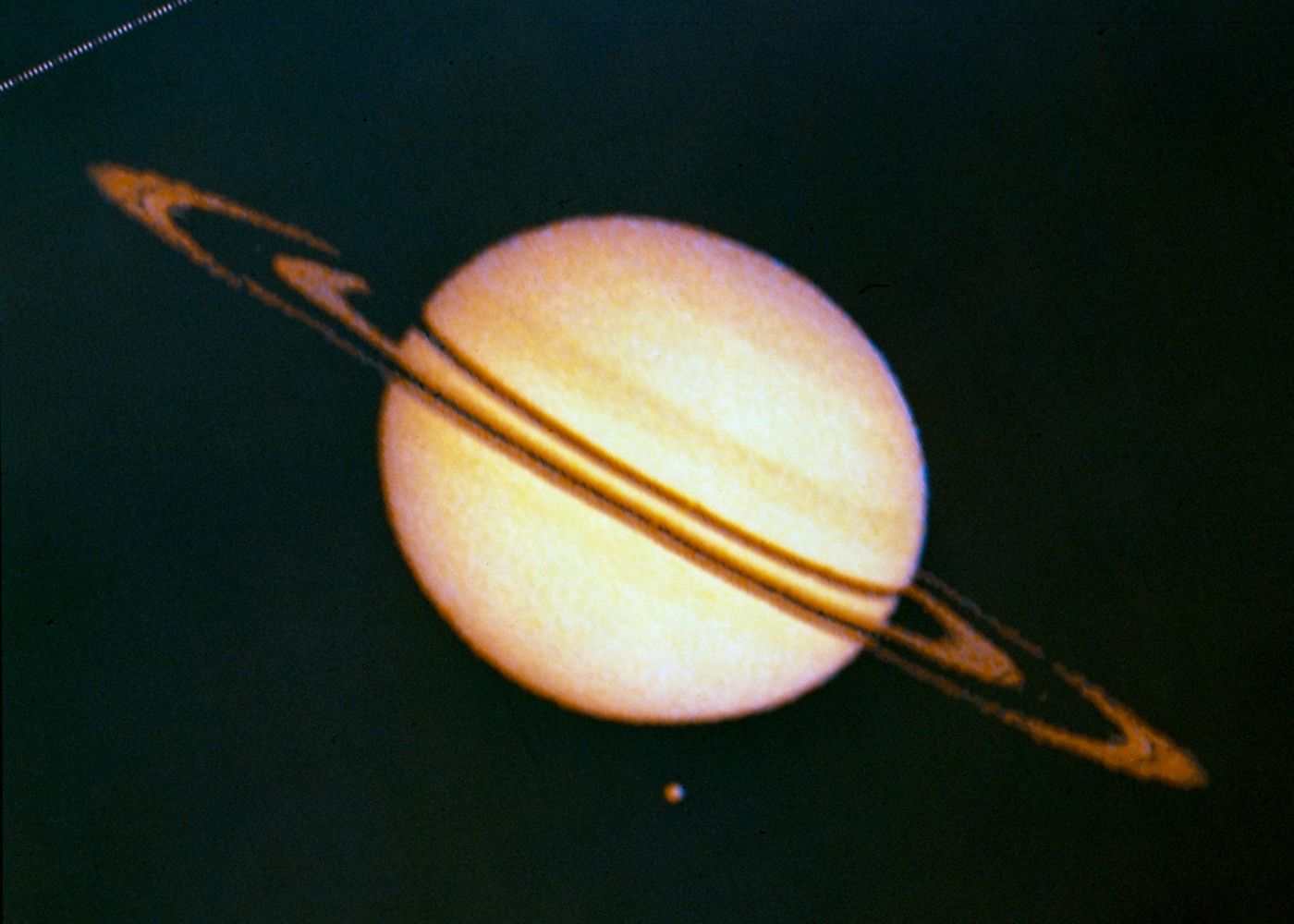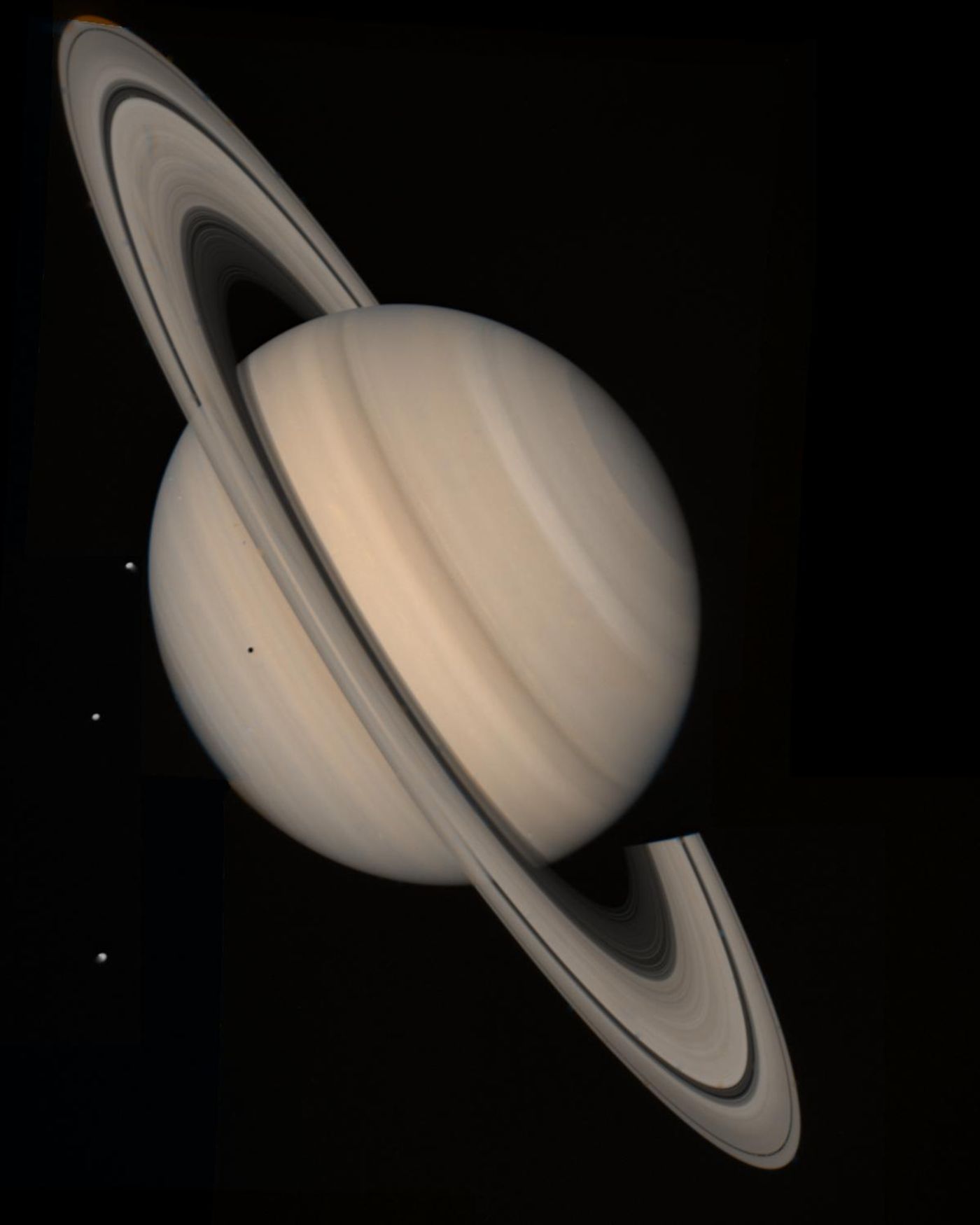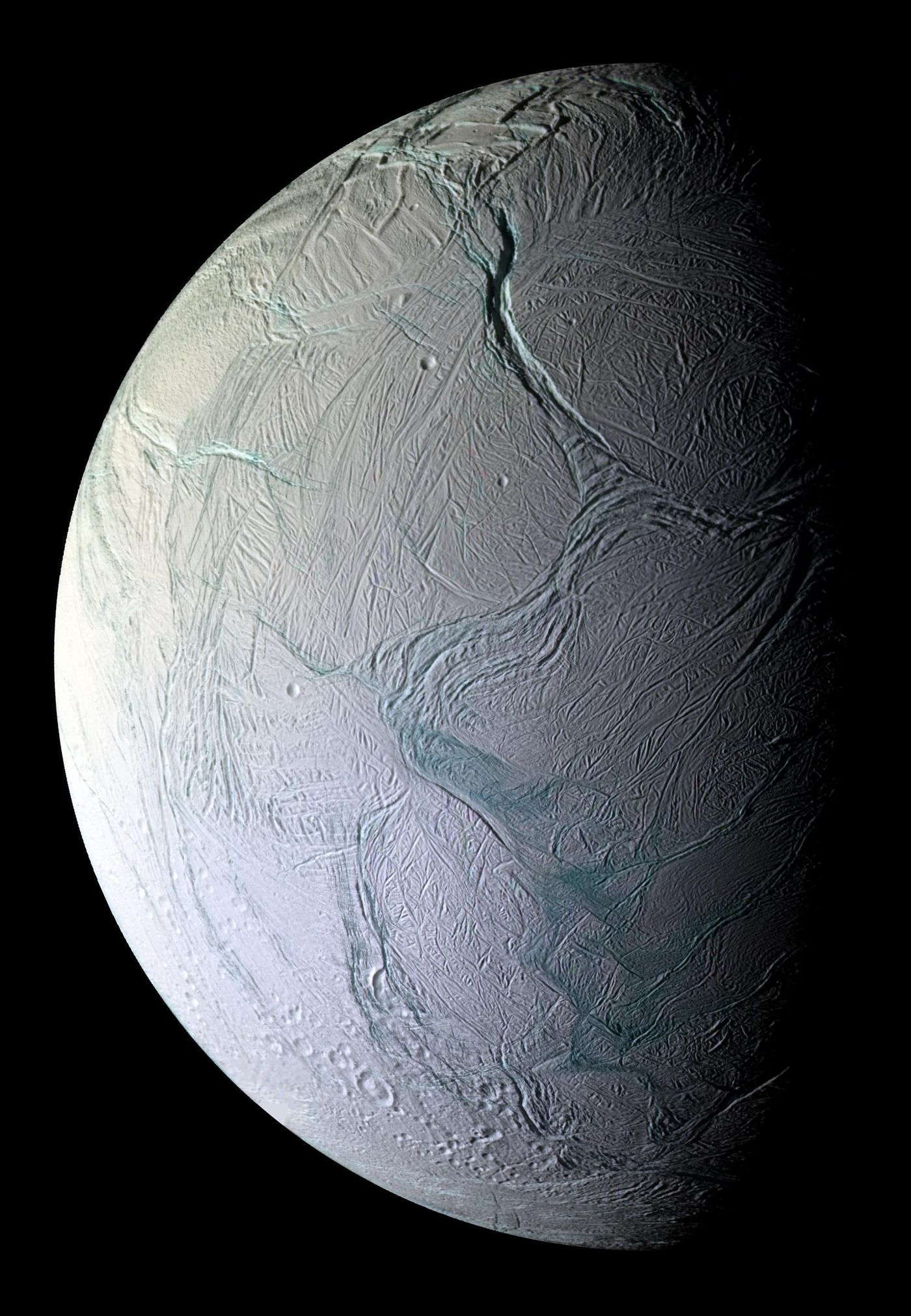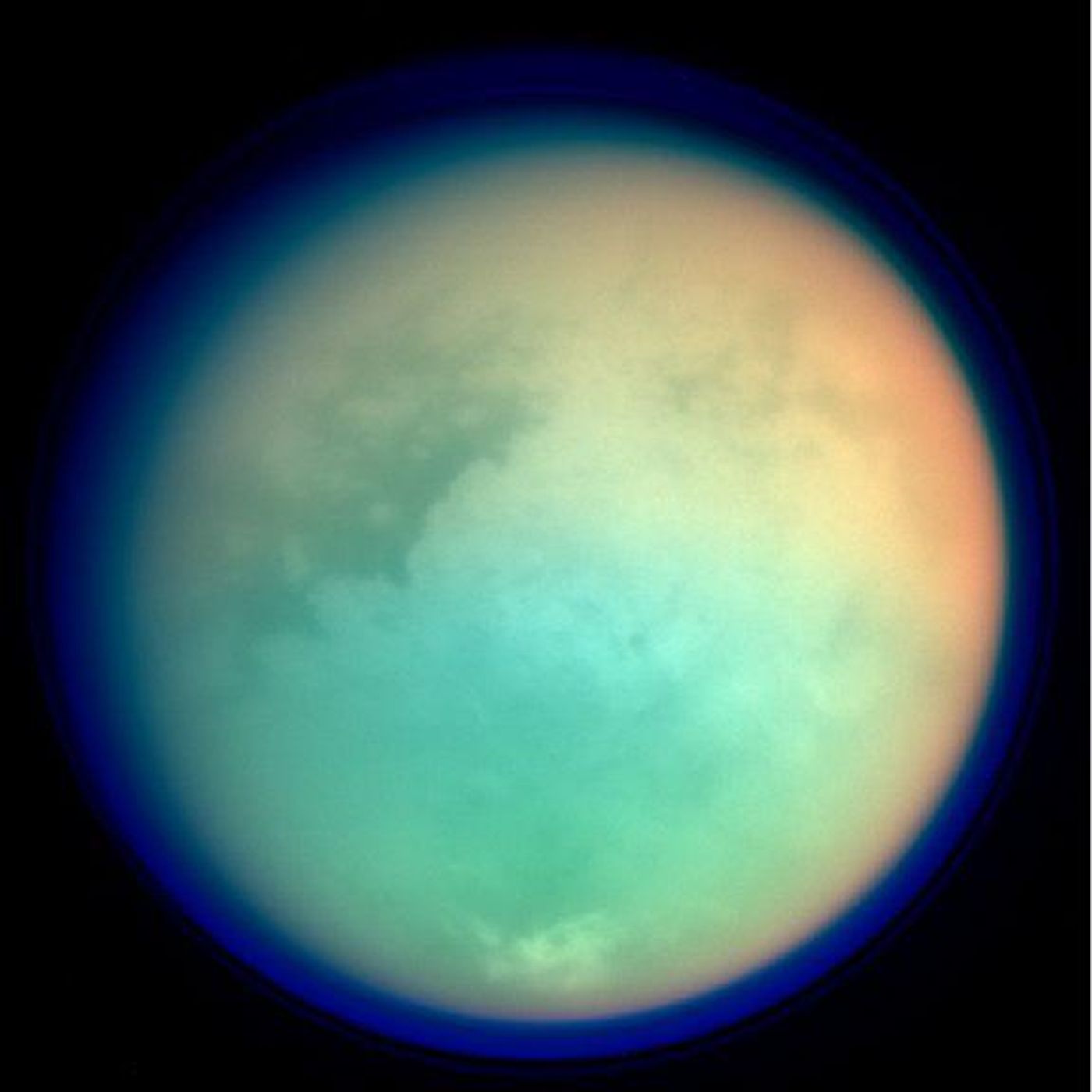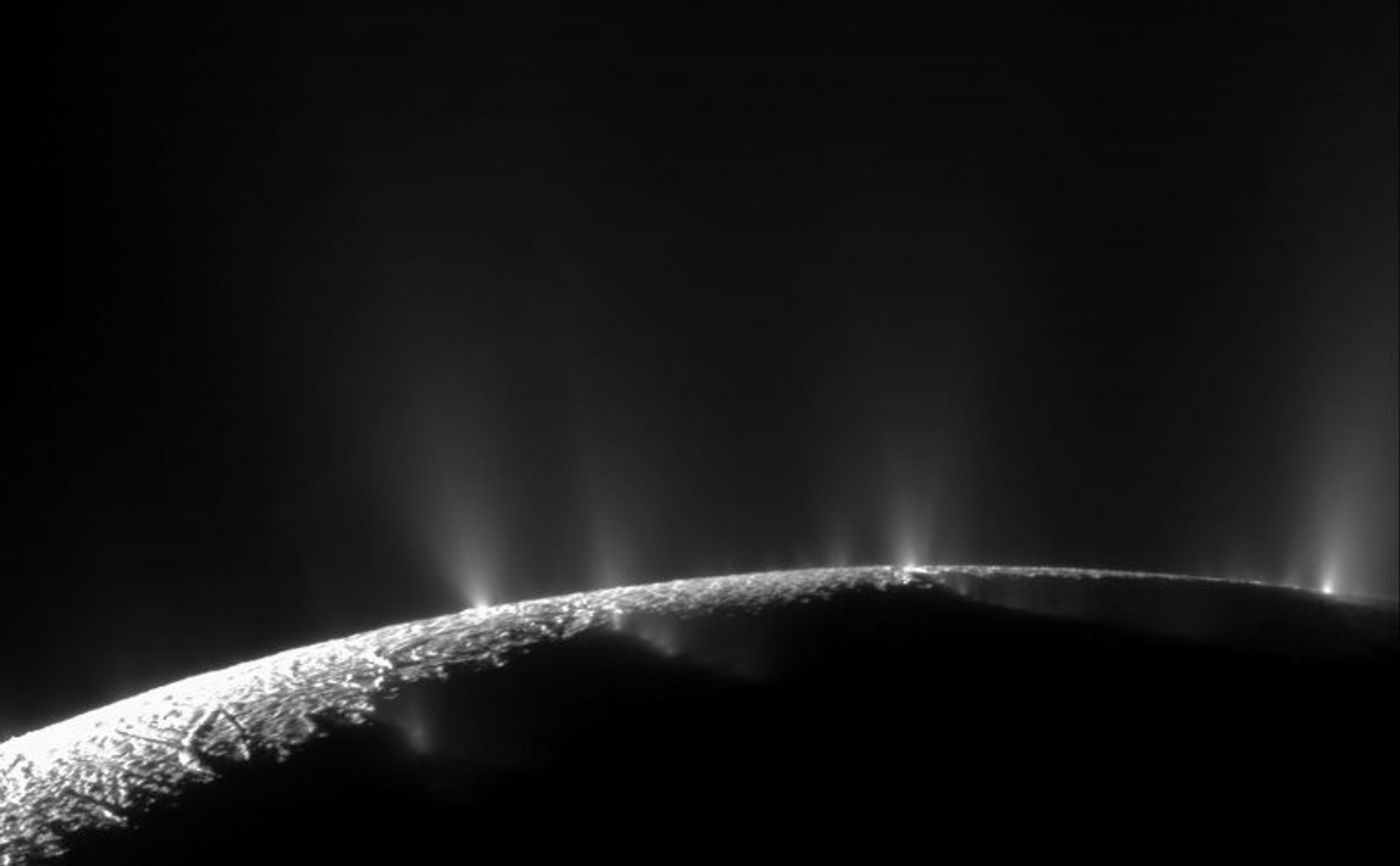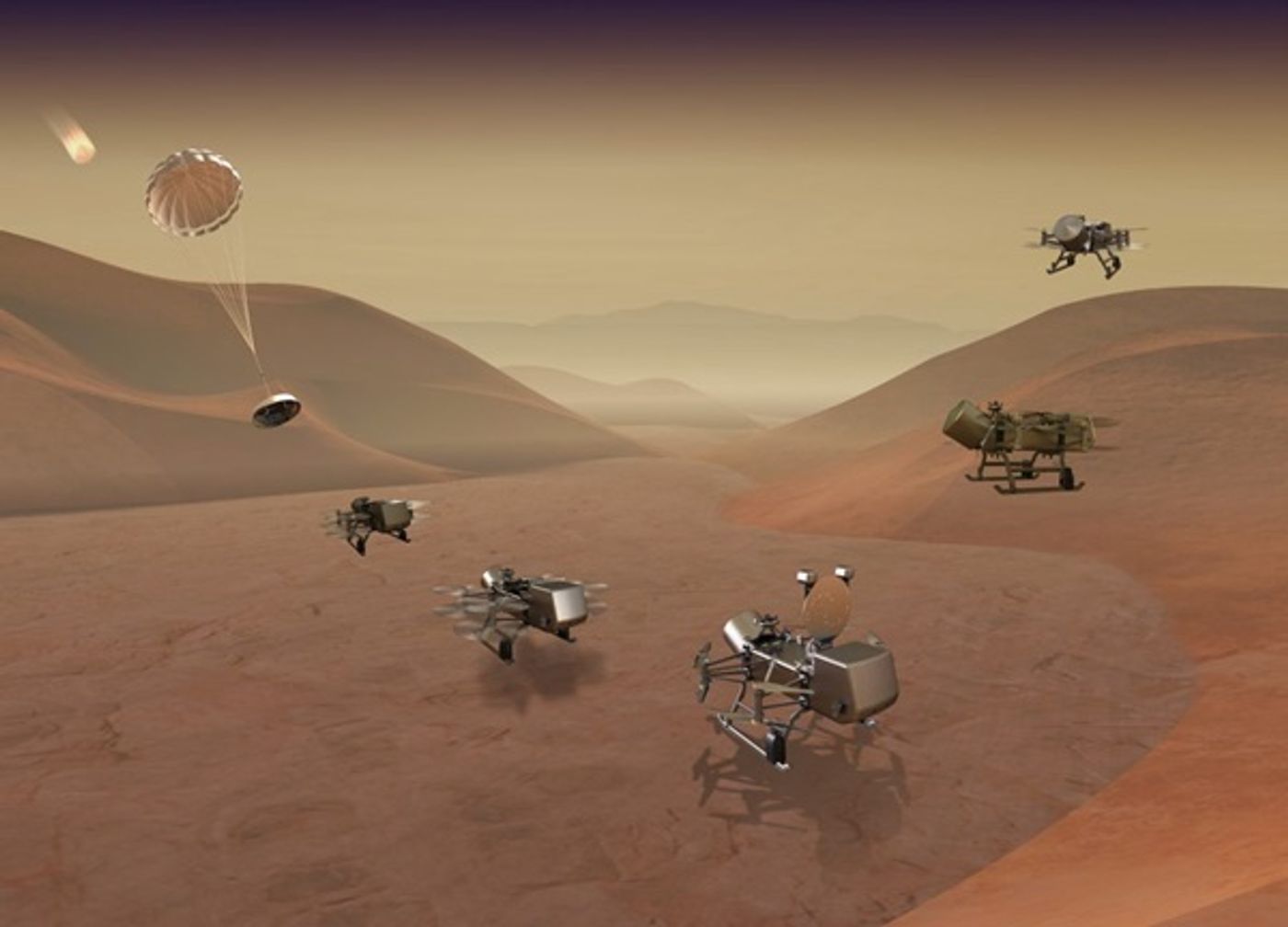Saturn - The Ringed Planet
Saturn, the sixth planet from the Sun – The Ringed Planet. Curious, young sky watchers often ask, “What’s the planet with the rings?” These rings are Saturn's identity, and those very rings that rotate around the second largest planet in the solar system are what have captivated humans for centuries. While these rings appear as little ears through telescopes back on Earth, spacecraft images have revealed breathtaking features not only about the rings, but of the planet itself. But Saturn possesses many more incredible features than its well-known rings.
Here we will explore Saturn’s physical characteristics, mythological and observational history, spacecraft exploration, potential for life on some of its moons, and determine what it is about Saturn that makes it so intriguing for exploration.
Saturn Characteristics
As stated, Saturn is the second largest planet in the solar system, and is so big you could fit about 764 Earths inside its volume. Saturn orbits beyond Jupiter with an average distance 886 million miles from the Sun, and has the largest number of moons at 82, with two of these moons, Enceladus and Titan, bringing intrigue from scientists about the potential for life.
Like Jupiter, Saturn is a gas giant, lacks any visible surface features due to its deep clouds, and is comprised of 75% hydrogen and 25% helium. While Saturn’s much larger planetary neighbor, Jupiter, is considered a failed star, it is believed that Saturn is far too small to have ever been able to achieve this status.
Saturn is obviously most well known for its vast system of rings, which extend up to 175,000 miles (282,000 kilometers) from the planet, yet the vertical height is far smaller at only 30 feet (10 meters) in the main rings. The rings are named alphabetically in the order they were discovered, with the main rings being A, B, and C, while rings D, E, F, and G are fainter and more recently discovered.
Ancient Astronomers
Like most planets that are visible from Earth, the planet Saturn has a rich history in mythology, to include Rome, Greece, Babylonia, and Hindu. While Saturn is named after the Roman god Saturn, this is equated to the Greek god Cronus (Titan father of Zeus), the Babylonian Ninurta, and the Hindu Shani. The sixth planet from the Sun was officially discovered by the father of astronomy himself, Galileo Galilei, as he first viewed Saturn through his telescope in July 1610. At first glance, he mistook the objects on either side of the planet as separate bodies and sketched them as such, believing Saturn to be a three-bodied system. It was not until 1659 when Dutch astronomer Christiaan Huygens observed Saturn with a much more powerful telescope that he proposed Saturn was surrounded by a thin, flat ring.
Spacecraft Missions to Saturn
Due to its incredible distance from the Earth, only four spacecraft have visited and explored Saturn, all from NASA: Pioneer 11 in September 1979, Voyager 1 and Voyager 2 flybys in 1980 and 1981, and Cassini which explored Saturn from 2004 to 2017.
Pioneer 11 was launched in April 1973 and became the first spacecraft to fly by Saturn in September 1979, with its closest encounter occurring approximately 13,000 miles (21,000 kilometers) from the ringed planet. Pioneer 11 took 440 images of the Saturn system, to include its largest moon Titan, which appeared as a “featureless orange fuzzy satellite” since the spacecraft instruments could not penetrate Titan’s thick atmosphere.
Voyager 1 flew by Saturn in November 1980, discovering five new moons while gathering new data about Saturn’s vast rings. The spacecraft also successfully imaged Saturn’s moons Titan, Mimas, Enceladus, Tethys, Dione, and Rhea, as well. Voyager 1 also gathered new data about Titan, with atmospheric data suggesting that Titan might be the first body in the solar system, aside from Earth, where liquid water might exist the surface, although these lakes were later shown to contain methane and ethane instead of water.
Voyager 2 flew by Saturn in August 1981 and continued the fantastic science achieved by Voyager 1, to include imaging Saturn’s moons Iapetus, Hyperion, Enceladus, Teyhys, Phoebe, and the more recently discovered Helene, Telesto, and Calypso. Like its predecessor, Voyager 2 also successfully gathered more data on Saturn’s rings, as well.
The most successful spacecraft ever to explore the Saturn system has been Cassini, which studied Saturn, its rings, and many moons from 2004 to 2017, until it performed five final orbits then literally plunged directly into the planet in September 2017. This final phase of the Cassini mission has been dubbed the Grand Finale. During its time exploring Saturn and its many moons, Cassini made several notable findings, to include finding liquid water on Enceladus; discovering and then pinning down more details about a giant methane lake on Titan; 50-mile landslides on Iapetus; a close-up view of Rhea; and a huge ring, 8 million miles away from Saturn, which was likely made of up debris from Phoebe.
An enormous accomplishment of the Cassini mission was the deployment of the European Space Agency’s Huygens probe to the surface of Titan, which detached from the Cassini spacecraft on Christmas Day 2004, beginning its 22-day coast to Titan. The probe successfully landed on the surface of Saturn’s largest moon on January 15, 2005, taking approximately two and a half hours to descend through the thick atmosphere. Huygens sent back data and images from Titan’s muddy surface for another hour and 10 minutes before its batteries ran out.
Potential for Life
As a result of these past successful missions to Saturn, specifically regarding the moons of Titan and Enceladus, numerous studies have suggested these two moons offer numerous opportunities to investigate the chemical evolution and origin of life.
As previously stated, Saturn’s largest moon, Titan, is the only other object aside from Earth that possesses liquid bodies on its surface. This has raised the intrigue for the possibilities for life on this distant moon, despite them being filled with methane and ethane, which the former also being found in the atmosphere. On Earth, methane is a by-product of many organisms, so why not Titan? While this remains a possibility, Titan is also impeccably much colder than Earth at a dismal -180˚C (-292˚F), so any life on Earth that we would send there would not be happy, let alone thrive.
Enceladus is Saturn’s version of Europa, a world surrounded by an icy crust with a liquid ocean deep inside. This liquid ocean was discovered and studied by the Cassini spacecraft as our brave robotic explorer flew through Enceladus’ plumes multiple times during its long mission, ultimately discovering a variety of organic molecules.
Future Missions to the Saturn System
While several missions were proposed for future exploration of the Saturn system, the winner was the Dragonfly mission, which is a rotorcraft-lander that will explore dozens of lakes across Titan while ultimately determining the habitability of the icy world. It is slated to launch in 2027 and arrive at Titan in 2034, and it will become the first vehicle ever to fly its entire science payload to new places for repeatable and targeted access to surface materials.
As always, keep doing science & keep looking up!
Sources: NASA Solar System Exploration (1), Cool Cosmos, Space.com (1), Nine Planets, Crystalinks, National Geographic, NASA Solar System Exploration (2), NASA JPL (1), NASA JPL (2), NASA Solar System Exploration (3), NASA Solar System Exploration (4), Space.com (2), NASA Solar System Exploration (5), Frontiers, European Space Agency, The Planetary Society, NASA Solar System Exploration (6), NASA, Space Center Houston
